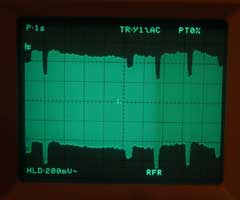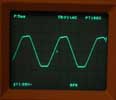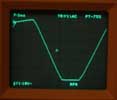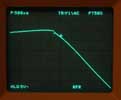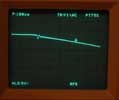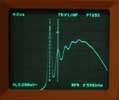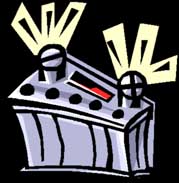
Air and Electric Current
What do air and the electric current have in common ?
They are both media needed for musical recording and reproduction.
As air is the medium in front of the microphone and again after the loudspeaker, the electrical current is the musical medium for all processes between the microphone and the speaker.
If you want to listen to music the very first prerequisite is silence, that means the absence of any disturbances in the medium air.
You cannot record or enjoy music while someone operates the vacuum cleaner in the same room. It is impossible.
The same holds true for the electrical current. You can neither record nor reproduce a musical performance in high-fidelity, if your recording or replay-equipment is powered from disturbed current.
As a vaccum cleaner makes unwanted noise in the air, there can also be unwanted noise in the electrical current.
This is a point that is often overlooked, but as a matter of fact, the quality of the electrical current that powers your equipment has the same influence on the sound, as for example the circuitry that is used.
The great majority of hifi-equipment is mains (AC) powered. But not only your hifi-stuff is mains powered, but many electrical devices in your house, neighborhood, block, region. You all virtually hang on the same wire. As any electrical device is powered on or off, a ripple is generated on the AC-wave. So if you live in a large city or near an industrial complex, your AC mains voltage can be quite noisy. This AC-induced noise also enters your hifi-system and generates signals that are not on the recording you want to listen to.
A practical proof for the above statement is the variety of products that are available in order to improve the current that enters your hifi-system: All kinds of purifiers, filters, power conditioners, power cables are available just to clean the AC-current before it enters the hifi-system.
The following 10-sec. scope-shot shows you the voltage variation on the transformer secondary of a mains powered audio amplifier (no signal or load applied to amplifier):
As you see, there are some larger drops, but also take a look on the smaller ripples.
If you think your hifi-system sounds much better in the night-time, this is not necessarily related to the amount of beer or wine you drink, it can also depend on the AC-current that is naturally cleaner during night, since less electrical consumers are active.
But let's assume, you live in a remote region with only few electrical consumers and your AC is clean.
The 'clean' mains AC voltage (110 .. 250V) is reduced to lower voltages by a transformer. Since all hifi-gear needs direct current, the lowered AC voltage must be rectified. This is done by a couple of diodes which load a capacitor in a switching manner, that means when the capacitor voltage is lower than the tranformer voltage the diode is switched on, charging the capacitor. As soon as the voltage across the capacitor reaches the actual level of the transformer secondary voltage, the diode switches off.
Let's take a closer look. The following shots show the voltage across one diode of an audio amplifier's full bridge rectifier. The picture series features continuous magnification.
There is a spike, each time the diode shuts off. Pic #4 shows, that the spike is really a longer ringing.
Pic #5 and #6 measure the frequency of the shut-off ringing. It's about 40kHz. But you see that this is not all. There are spikes within the ringing. Pic #7 shows am even greater stretch. You see that much higher frequencies are involved, the spike is a second ringing at around 600kHz. These measurements are made with no signal applied to the amplifier and thus with low forward current. With the amplifier being loaded, the amplitude of the spikes and ringing is higher.
Do you think I'm counting peas ? This is the reason you eventually hear a mains hum from your speakers. Normally the feedback of the amplifier would zero out the switching spikes, but the frequency of the ringing is so high, that the amplifier is not able to eliminate it.
The distortion mechanism of switching diodes is very low in numbers. It is part of the total-harmonic-distortion figure of your amplifier, but even if your amp's distortion is 0,0001%, this kind of high-frequency burst distortion is not at all correlated to the music and thus you may well be able to hear it.
There are ways to lessen or change the effect of diode switching (i.e. placing a capacitor over the rectifier diodes, chosing fast recovery diodes, etc.) but in practice I have not encountered any AC powered amplifier without a certain level of mains hum.
Even if the mains hum is very low, it changes the sound character of the musical performance. It throws some kind of grain and aggression into the picture. This deteriorating effect is smaller with vacuum tube amplifiers that employ a rectifier-tube which does not generate high-frequency bursts.
However, there is a very effective way, we can completely eliminate the negative effects of AC induced noise and switching bursts:
Battery Power
If we were able to power our hifi-system with a battery, we would not only avoid the mains- and diode-switching-noise, we would also have a fast power source with a very low impedance. No need to employ large (and slow) electrolytic capacitors. No need for expensive power cords, no filters, purifiers or AC-conditioners required.
What makes a high-quality audio amplifier expensive ? It is the power supply.
In order to lessen the effects of AC noise and switching HF bursts while maintaining a low output impedance, sophisticated circuitry and expensive components are needed. And even then, the performance of an expensive hi-end amplifier may still be improved by certain power cords or expensive AC-conditioners.
Does that make sense ?
In any case, AC power may be convenient, but it makes our hifi-gear very expensive as soon as a - higher than standard - qualitiy is desired.
Even if we were willing to spend larger sums of money to buy expensive equipment, power cords, purifiers and power conditioners, the performance even of your average car battery in terms of current capacity, noise and speed is very difficult to match.
In other words, with the use of - just your old car battery -, audio equipment of high sound quality could be achieved with moderate cost.
Altmann Micro Machines … Dipl.-Ing. Charles Altmann… Erlenstrasse 15… 42697 Solingen… Germany
phone +49-212-233-7039… email
- Other Altmann Sites: www.jitter.de www.altmann.haan.de www.amm.haan.de
- AMM reserves the right to make changes without further notice to any products herein to improve reliability, function or design.
